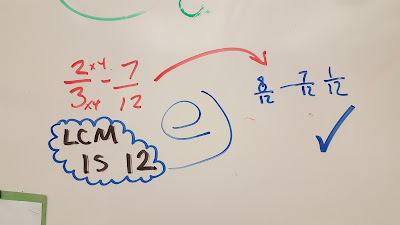Media Literacy
Depending on where you look, most Internet sites and books will have a list of the key components of Media Literacy:
A couple of weeks ago, when we first began discussing Media Literacy and the concept of fake news, we found out about a university that turned out to be fake. When we investigated, the website for the school looked pretty authentic.
The website (http://www.kingslakeuniversity.org/about/toponlineuniversity/) looked real. The Internet is an example of a medium; the word media is the plural form of a medium and both have been constructed. The authentic look of the site is deliberate and conforms to a particular aesthetic form we have become familiar with. Developing our Media Literacy skills requires us to be aware of how information is put together and constructed.
Unfortunately, when people acquire fake degrees and attempt to practice or sell themselves as something they are not, there is a potential for a lot of damage. Consider this phony counselor: http://www.cbc.ca/news/business/diploma-mills-marketplace-fake-degrees-1.4279513
The original story on the fake university, which we will check out another time, is here:
Healthy Living: conversation starters
In Media Literacy, one of the questions you were asked about related to the idea of knowing where your SOURCES come from. In preparation for today's introductory lesson on making healthy choices around food, you can find a lot of information but the source it comes from must always be noted, even when the information is beneficial.
Let us turn our attention to what we can do to ensure we are at our best. Think of this as an opening conversation to future investigations about what we eat and the importance of the choices we make around food.
 |
| https://kidshealth.org/en/teens/breakfast-sheet.html?ref=search&WT.ac=msh-t-dtop-en-search-clk |
Here is another link for some ideas on eating healthy in the morning, when you feel you don't have enough time:
The Hospital for Sick Children, in Toronto, has an article we will listen to on the importance of eating a healthy breakfast. Here is the link: http://www.aboutkidshealth.ca/En/News/Columns/FitnessAndNutrition/Pages/The-importance-of-a-healthy-breakfast.aspx
Marisa Moore, an Atlanta based nutritionist, has a short article which summarizes some key points about why you should eat breakfast: http://www.eatright.org/resource/food/nutrition/healthy-eating/5-reasons-your-teen-needs-breakfast
As we explore the topic of Health this year, making healthy food choices will always be one of our goals. In class, we will reference Canada's Food Guide. I have ordered some copies for the Intermediate team. In the meantime, you can find some more information here: https://www.canada.ca/content/dam/hc-sc/migration/hc-sc/fn-an/alt_formats/hpfb-dgpsa/pdf/food-guide-aliment/view_eatwell_vue_bienmang-eng.pdf
Marisa Moore, an Atlanta based nutritionist, has a short article which summarizes some key points about why you should eat breakfast: http://www.eatright.org/resource/food/nutrition/healthy-eating/5-reasons-your-teen-needs-breakfast
As we explore the topic of Health this year, making healthy food choices will always be one of our goals. In class, we will reference Canada's Food Guide. I have ordered some copies for the Intermediate team. In the meantime, you can find some more information here: https://www.canada.ca/content/dam/hc-sc/migration/hc-sc/fn-an/alt_formats/hpfb-dgpsa/pdf/food-guide-aliment/view_eatwell_vue_bienmang-eng.pdf
This year, I want to make it one of my goals that we learn more about the brain and how it works. I do know that there are some foods which can be really positive for how our brain functions. Here is a quick poster idea from a Pinterest site:
 |
| https://i.pinimg.com/736x/33/c4/a8/33c4a8b32350a257fb4c3dde7e78bb74--healthy-brain-brain-health.jpg |
FYI: question about the length of spikes (also a Measurement Math question!!)
spike donation at Morant Bay High School
 |
| https://www.amazon.com/Omni-Lite-Replacement-Upgrade-Track-Spikes/dp/B019EVZSE8 |
Mathematics:
I had a personal reminder of the importance of the poster I put up on the front door of the value of not knowing and not knowing yet. I figured out how to explain how you would find the GCF of a number if you were not yet comfortable with knowing your multiplication tables. I thought it would be difficult to explain the concept, but once I tried the exercise a couple of times, it made sense. I will post a photo of the process, once I get into the class and a video on the 7/8B Math site on Google Classroom.
The video that relates to this tutorial is posted on Google Classroom.
For those of you who are having challenges logging on, I will post the Math homework questions and answers that were put on the board. In the future, I will have to ask that all students show the steps in how they arrived at their answer. Simply writing an answer is not very helpful to those who are interested in the process.
 |
| The GCF method, using the 20x20 multiplication chart. |
Homework
On Monday, I will ask for all of the agendas to be handed in so I can take a look to see if they have been used. Among the 5 teachers in the Intermediate division, I am sure there is some homework. I gave out some homework. To simplify, I took a photo of the Homework board.
It is very important that the students get into the habit of doing their homework. It will assist them in feeling connected to what is going on in school and help with the development of some important habits.
Have a restful weekend.

















































